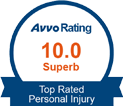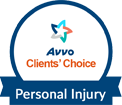Alcohol, drugs, and a motorcycle. These ingredients do not mix well together. If you ignore this simple fact, you will get fatal results. If you have been injured in a drug-related motorcycle accident in California, you should reach out to us at The Personal Injury Law Firm. We will help you obtain the compensation you deserve.
Drug-Related Motorcycle Accident Statistics
According to the Center for Disease Control and Prevention, 13 people die each day in the United States due to a drug-related motorcycle accident. This means that every two hours, there is one death because of an impaired rider. As per the National Highway Traffic Safety Administration, the total annual cost of DUI related crashes is around $44 billion.
In the State of California, 14% of all traffic accident deaths were brought about by impaired motorcycle riders. In 2016 - 2018, over 1200 riders were arrested for DUI.
As highlighted by the Federal Bureau of Investigation (FBI), cannabis use is continuously increasing each passing day. Around 15% of nighttime motorists usually have some marijuana in their body system, and 25% of them are more likely to be involved in an accident.
As highlighted by the CDC Injury Center, it is mostly teens who are the at-fault parties in drug-related motorcycle accidents. This is because most of them do not have sufficient riding experience, and they may easily underestimate or fail to recognize road hazards. They are also more prone to violating various traffic laws. When this lack of experience is coupled with drug and alcohol use, the result is a tragic accident.
At least 1 in 6 college students have ridden a motorcycle while intoxicated once per year. Alcohol and marijuana, top the list of the most frequently used drugs by motorcyclists, followed by prescription painkillers and cocaine.
Due to mental decline, aged adults often use prescription medication wrongly. They may not follow the right dosage and take it in higher amounts or during wrong times. Also, their body system may not break down the drugs quickly. These factors make aged adults engage in unintended impaired riding.
As you can deduce from these statistics, drug-related motorcycle accidents are quite common in California. The victims of these accidents usually suffer grievous injuries, and most of them do not get the value of compensation they deserve.
Effects of Drugs and Alcohol Use on Motorcyclists
Besides alcohol, various drugs contribute to intoxicated riding in California. These drugs include marijuana, cocaine, and prescription medication. Each of these drugs has some specific negative symptoms that can affect how you ride. Often, some drug-users may mix these substances and even combine them with alcohol.
You should know that just a small amount of a narcotic, prescription drug, or alcohol can affect the way you ride. Moreover, some narcotics can stay in your body system for days or weeks after you have used them; and they may cause you to indulge in impaired riding.
For you to ride a motorcycle, you must possess cognitive, psychomotor, simultaneous task accomplishment, vision, judgment, hearing, reaction time, and information processing skills. Typically, these skills become impaired when you are under the influence of drugs and alcohol. Here is a detailed analysis of the effects of drugs and alcohol use on motorcyclists:
1. Marijuana
Marijuana can impair the ability of the motorist to ride the motorcycle. This drug affects concentration and makes it difficult for motorcyclists to perceive distance and time. This may lead to bad judgment, distraction, impaired reaction time, drowsiness, poor speed control, and lack of capacity to interpret traffic signs.
When a drug user combines marijuana with alcohol, it will make him become significantly impaired in specific areas such as coordination and reaction time. Marijuana combined with opiates and sedatives may cause an increase in anxiety levels and hallucinations. Combining stimulants such as caffeine, cocaine, and nicotine with cannabis may result in unpredictable and drastic side effects.
2. Cocaine
Cocaine can mask fatigue successfully. However, high doses of cocaine may lead to impaired judgment and lower the motorcyclist’s concentration levels. Cocaine also affects vision, coordination, and reaction time.
When a person takes cocaine, he will tend to act impulsively and engage in high-risk activities without exercising due caution. Such a person may violate several traffic laws without considering the consequences.
Continuous use of cocaine may make the person to falsely feel stimulated and alert, although his physical reactions have been impaired. Cocaine can also cause hallucination, blurring, or the 'snow lights' phenomenon. A motorcyclist who has used cocaine will frequently notice weak light movements or flashes and swerve away or towards them. They can also hear strange sounds or smell scents that do not exist. These hallucination side effects may distract them as they ride.
3. Prescription Drugs
There are three main types of prescription drugs that can cause motorcycle accidents: tranquilizers, opiates, and amphetamines. Tranquilizers can bring about drowsiness, poor coordination, slow reaction time, altered perceptions, and memory impairment. A motorcyclist who has abused tranquilizers may find it difficult to maintain lanes and obey roadside instructions.
The use of opiates may cause visual impairment, drowsiness, and mental confusion even at low, moderate doses. A motorcyclist who utilizes opiates may fail to maintain the correct lane while riding and make fatal judgmental errors.
Lastly, amphetamines interfere with vision and concentration. They can also increase the tendency of the motorcyclist to involve himself in dangerous activities.
4. Alcohol
Alcohol can lead to drowsiness, impaired coordination and balance, slow reaction time, and reduction of the ability to think clearly. If an individual rides a motorcycle while under the influence of alcohol, he may cause a terrible crash.
The term Blood Alcohol Content (BAC) is normally utilized to refer to the amount of alcohol that is present in the blood system of an individual. BAC is measured as weight per unit of volume, and it is denoted in percentages. For instance, if a person has a BAC of 0.06%, it means that a sixth of his blood is alcohol.
In California, the maximum BAC limit an individual should not exceed while riding a motorcycle is 0.08%. If a motorist exceeds this limit, he may be put under arrest for per se DUI. Nevertheless, even a small fraction of alcohol can tamper with your riding ability. Here is a list of the effects of alcohol use at different BAC levels:
0.02 BAC
- Difficulty in concentration
- Loss of judgment
0.05 BAC
- Poor reactions in emergency roadside situations
- Exaggerated behavior
- Inhibitions lowered
- Starting to lose coordination
0.08 BAC
- Impairment in reasoning, judgment, and memory
- Difficulty in controlling the speed
- Poor concentration
- Poor recognition and reaction to emergencies
0.10 BAC
- Difficulty in maintaining lanes
- Slow thinking
- Extremely poor coordination
0.15 BAC
- Lack of balance
- Poor muscle control
- Substantial deterioration on your riding skills
An Overview of Drug-Related Motorcycle Accidents
Motorcycles give freedom, sheer thrill, and convenience to the riders. However, if an accident occurs, you are more likely to incur injuries as compared to being involved in a car crash. Besides alcohol and drug abuse, other factors that can increase the injuries and fatalities of motorcycle accidents. Some of these factors include failure to put on a helmet, inexperience, and age.
As per the National Highway Traffic Safety Authority, the risk of death in a motorcycle crash is 37 times higher than that of a motor vehicle accident. When you are riding on a motorcycle, your whole body is exposed; and you will suffer the full impact of a crash if it occurs. In comparison to vehicles, motorbikes are less stable, and they can easily be destabilized and thrown off course. Moreover, they are hard to spot, and other vehicles may not notice them quickly enough to prevent an accident from happening.
If the motorcyclist is intoxicated, he may end up making fatal mistakes since he is not in his right state of mind. Drugged riders may change lanes carelessly, negotiate corners, and accidentally collide with stationary objects. This may make them hit pedestrians, collide with other vehicles, and damage property. Note that intoxication increases the risk of a motorcycle accident by five times.
Most drug-related motorcycle accidents involve group rides that are meant for recreation and entertainment. When group riders operate a motorcycle while under the influence of alcohol or drugs, they may engage in speeding, taking wrong lanes, cutting corners, and violating essential traffic rules, this way, they expose themselves and other road users to danger. When intoxicated group riding occurs at night, the risk of a motorcycle accident is much higher.
California’s primary law that illegalizes causing a drug-related motorcycle accident is Vehicle Code 23153. This code makes it an offense to practice drugged riding and cause injuries to other people. Generally, it is a criminal offense in California to ride while under the influence of alcohol or drugs. Intoxicated riders may be charged with these criminal offenses, as well as face personal injury lawsuits filed by the victims.
What to Do After You Have Been Involved in a Drug-Related Motorcycle Accident
What should you do after you have been involved in a drug-related motorcycle accident? After a motorcycle accident, you may incur severe injuries, and the emotions of the people around you may run high. However, there are some crucial steps you should take after you have been involved in a drug-related motorcycle accident. Here are some of them:
1. Check on Other People Involved in the Accident
Even if you may have a grudge over the intoxicated motorcycle rider, you should check on him to assess whether he is okay. Besides the motorcyclist, other people in the accident scene may have been injured. You may also personally incur some injuries. Make sure that you and all the injured individuals access medical care.
2. Assess Property Damage
Often, motorcycle accidents damage property that lies in proximity to the accident scene. You should assess the value of the damaged property, and record the contact details of the owner of the property. This information will help you validate your claim.
3. Contact the Police
You should call 911 if you or another person has incurred severe physical injuries because of the accident, or if the accident has led to the substantial damage of a piece of property. When the cops arrive at the scene, request them to file a report. Also, you should jot down the contact details of the responding law enforcement officers.
4. Talk to Eye Witnesses
Ask all the witnesses of the accident scene to describe to you what they saw. Politely request them for their contact details, including their cellphone numbers, names, and residential addresses. These witnesses will provide oral evidence to prove your personal injury claim before the court.
5. Exchange Information
If it is possible – you can ask the intoxicated motorcyclist to give you his official name, phone number, and address. You should also obtain the contact details of other people involved in the drug-related motorcycle accident, including other passengers and pedestrians. Your personal injury attorney will reach out to all these people to gather evidence that can help solidify your claim.
6. Keep Your Medical Records
You should keep all your medical records after you have been involved in a drug-related motorcycle accident. Your attorney will utilize these records to assess the value of the monetary damages you deserve.
Note down all the doctors, chiropractors, and physical therapists who treated your injuries. You should also record each medical caregiver that recommended you seek the services of other professionals. Maintain a detailed account of the type of medications and treatment you received. Furthermore, request copies of your medical bills and reports. This information will help you prove the value of your medical expenses.
It is quite easy to keep track of all your expenses, but it is challenging to prove the degree of your pain and suffering before the court. You can maintain a daily journal in which you will write about how the injuries have impacted your normal routine each passing day. List all the missed workdays, all the activities you failed to undertake because of the injuries, and how your loved ones cope with you.
7. Take Photographs
Take photos of the motorcycle accident scene using your smartphone. Photographs provide clear evidence of what happened in the accident, and they may prove useful to your claim.
8. Avoid Early Settlement Offers
Never accept early settlement offers from an insurance company without consulting a personal injury attorney. Most insurance companies want to make quick and huge profits, and they may offer to pay you off with an amount of money that is not equal to the value of compensation you deserve.
Moreover, some injuries do not manifest themselves immediately after the accident. If you had already accepted an early settlement offer, you won’t receive further monetary compensation for these injuries.
9. Talk to a Personal Injury Attorney
You should consider consulting an experienced personal injury attorney after you have been involved in a drug-related motorcycle accident. A personal injury attorney will help you calculate the amount of money you should receive as compensation. He will also advise you on how to seek compensation from the insurance company of the at-fault party. If you retain him, he will work on a contingency fee basis and file a claim on your behalf.
How to Prove Intoxication in a Personal Injury Drug-Related Motorcycle Accident Personal Injury Claim
Victims who have been involved in a drug-related motorcycle accident should know how to prove that it is the intoxicated motorcyclist who was at-fault. This is because California is a tort auto insurance state, and the plaintiff should identify the party at fault for him to be awarded damages. Here is how you can prove intoxication in a personal injury drug-related motorcycle accident lawsuit:
1. Physical Symptoms of Intoxication
If the at-fault motorcyclist was high on drugs or alcohol, he might manifest various physical symptoms of intoxication. Some of these symptoms include red, bloodshot eyes, slurred speech, poor memory, and concentration levels, hallucination, poor coordination, drowsiness, and a stench of the drugs or beverages he took. If the motorcyclist manifested any of these symptoms, the court might conclude that he was intoxicated, and he substantially contributed to the occurrence of the accident.
2. Reckless Riding
A drugged motorcyclist will not pay attention when riding, because he is not in his right state of mind. Such a rider may violate various traffic laws. For instance, he may indulge in speeding, drifting between lanes, or running a red light. These reckless actions may lead to the accident.
3. Drug Tests
Immediately the cops arrive at the accident scene; you should inform them that you suspect that the motorcyclist was intoxicated. These law enforcement officers can subject the rider to a drug test. The results of this test will solidify your claim. If the motorist refuses to submit to the test, the refusal will serve as strong evidence to ascertain that he was high on drugs or alcohol at the time when the accident occurred.
Compensation for Victims of Drug-Related Motorcycle Accidents
You deserve to receive compensation for any financial harm or loss you incurred because of the drug-related motorcycle accident. The amount of compensation varies depending on the degree and extent of your injuries.
Compensatory damages may cover your medical bills, lost wages, loss of limbs, disfigurement, scarring, loss of consortium, and pain and suffering. If your loved one was killed in a drug-related motorcycle accident, you can institute a wrongful death lawsuit to obtain compensation. The amount of damages awarded in a wrongful death lawsuit will cover all the financial expenses you incurred because of the death of your loved one such as burial and funeral expenses, lost wages the victim would have earned had he survived, and compensation for loss of support and companionship.
Strategies to Reduce Drug-Related Motorcycle Accidents
Because intoxicated riding puts people at a higher risk for crashes, public health experts have encouraged people who use alcohol and drugs to develop social strategies that can prevent them from riding while impaired. For instance, they can utilize the public transport system as an alternative, request their sober friends to ride them to their destinations, and participate in joint discussion groups about the dangers of drugged riding.
According to the National Highway Traffic Safety Administration (NHTSA), state governments should implement some specific strategies to reduce or prevent drug-related accidents in their territories. Apart from the NHTSA, the Guide to Community Preventive Services has also recommended these strategies. The state of California has implemented almost all of them. They include:
1. Laws against Intoxicated Riding
As per the Federal laws, it is unlawful for an individual to operate a motorcycle or a vehicle with a BAC exceeding 0.08%. Teenagers should not ride or drive if they have any measurable amount of alcohol in their blood systems. Also, the minimum legal drinking age is 21 years.
Narcotics are prohibited in California, and any person found selling them or in possession of them will be arrested and prosecuted for criminal offenses. These laws have helped minimize intoxicated riding and saved thousands of lives.
2. Mass Media Campaigns
The state government of California has used mass media campaigns to spread messages about the risks associated with intoxicated riding. These campaigns persuade people not to ride while intoxicated and encourage them to prevent their loved ones from doing so.
3. Brief Interventions and Alcohol and Drug Screenings
Brief interventions and screenings take advantage of 'teachable moments' to identify individuals who have alcohol and drug addiction problems. These individuals are taken to state-certified rehabilitation centers to enable them to access the treatment they need.
4. School-Based Educational Programs
California's educational curriculum incorporates lessons that warn students about the dangers of alcohol and drug abuse. Students are encouraged to refrain from intoxicated riding or driving and to seek help from a responsible adult if they have a drug addiction problem.
Find a California Personal Injury Attorney Near Me
Victims of drug-related motorcycle accidents usually face grievous physical injuries, and some of them may even die. It is not justifiable to compensate for the loss and pain that result from these accidents with money. However, monetary damages cushion the victims from incurring unnecessary financial burdens, and they provide closure to their loved ones. At the Personal Injury Law Firm, we will stay by your side in your recovery journey and help you fight for compensation. Call us today at 619-625-8707 to receive professional legal help.
 800-492-6718
800-492-6718







